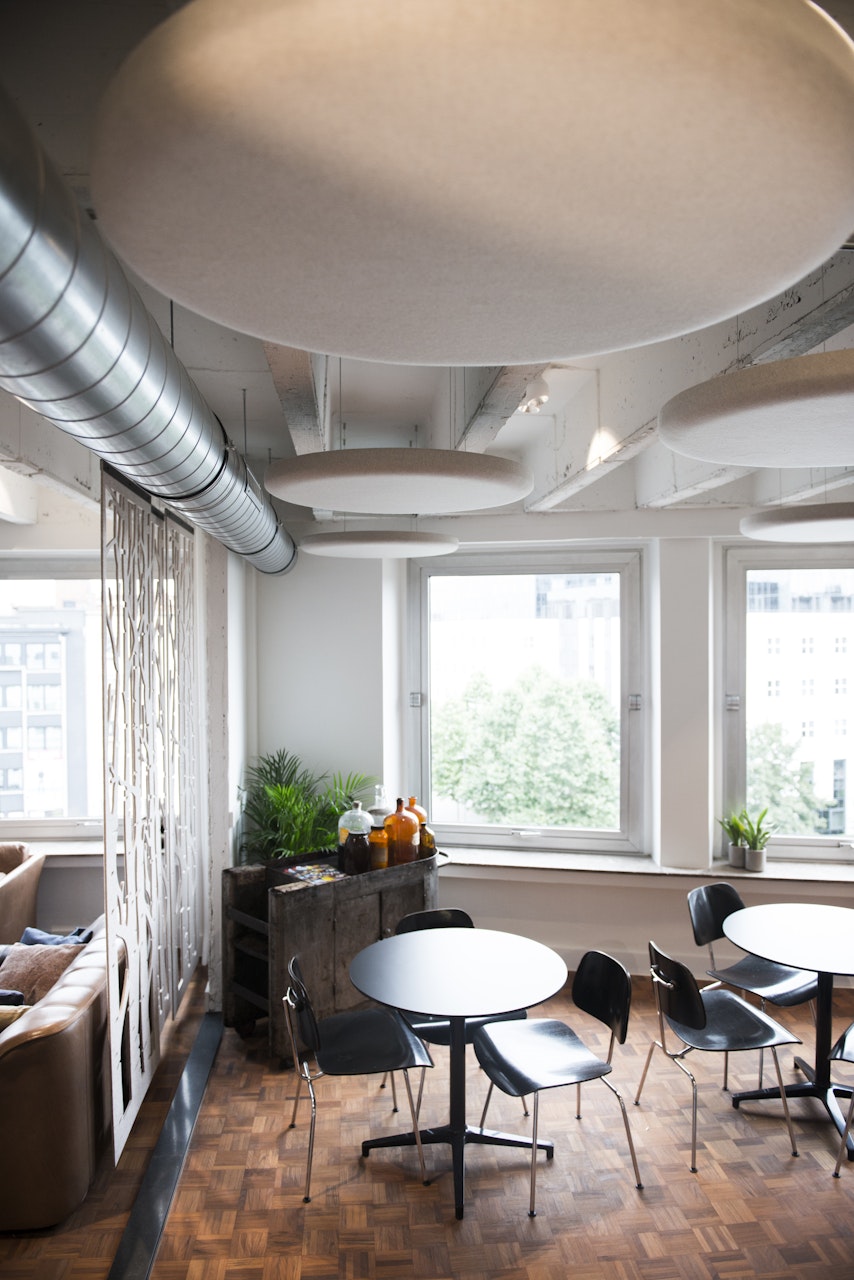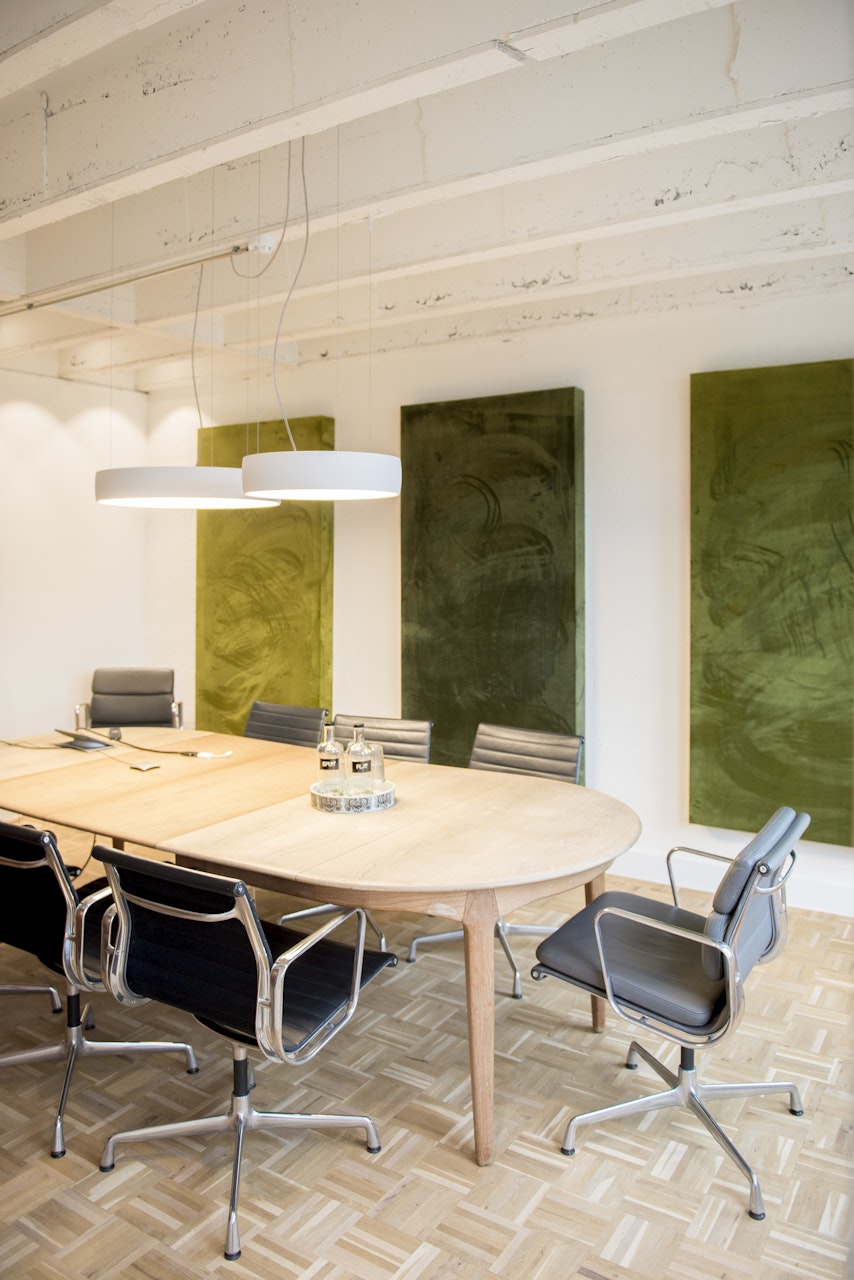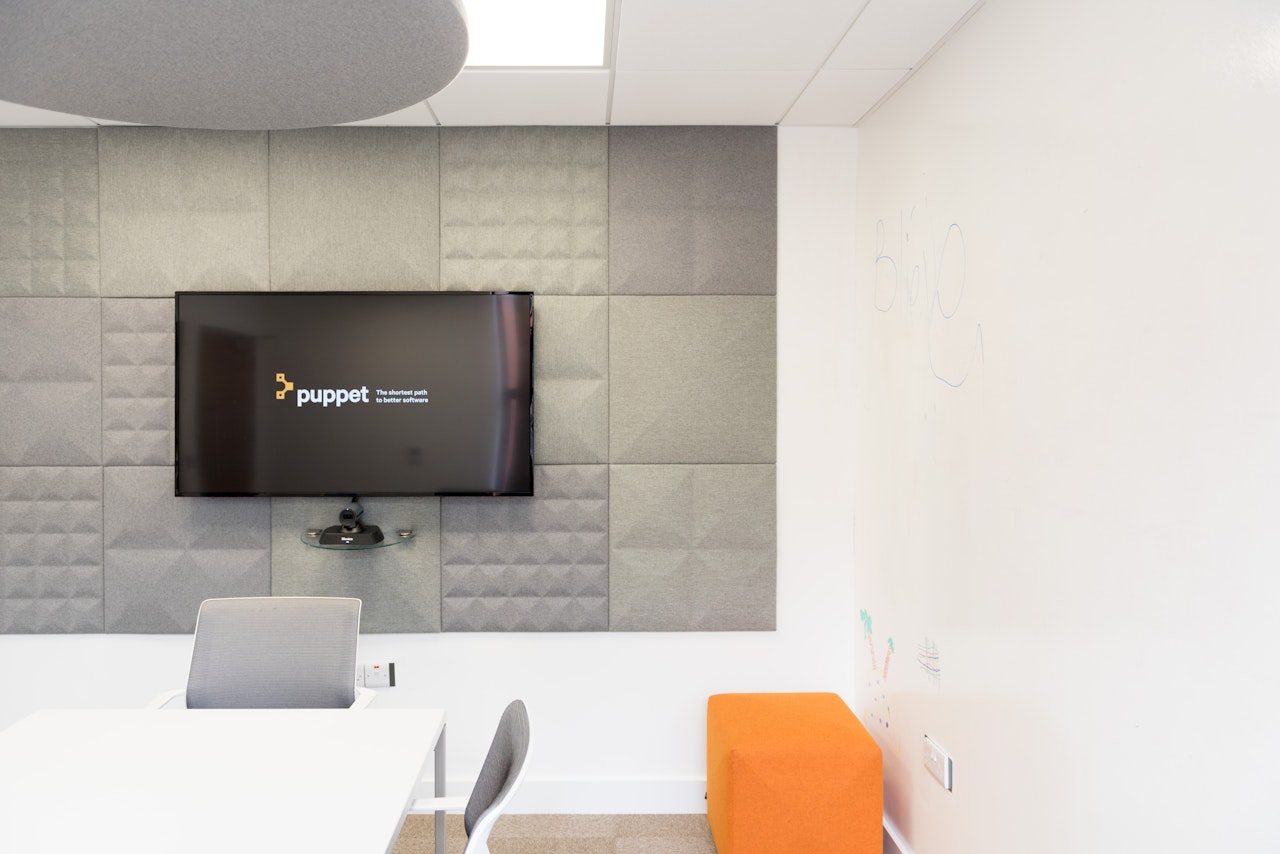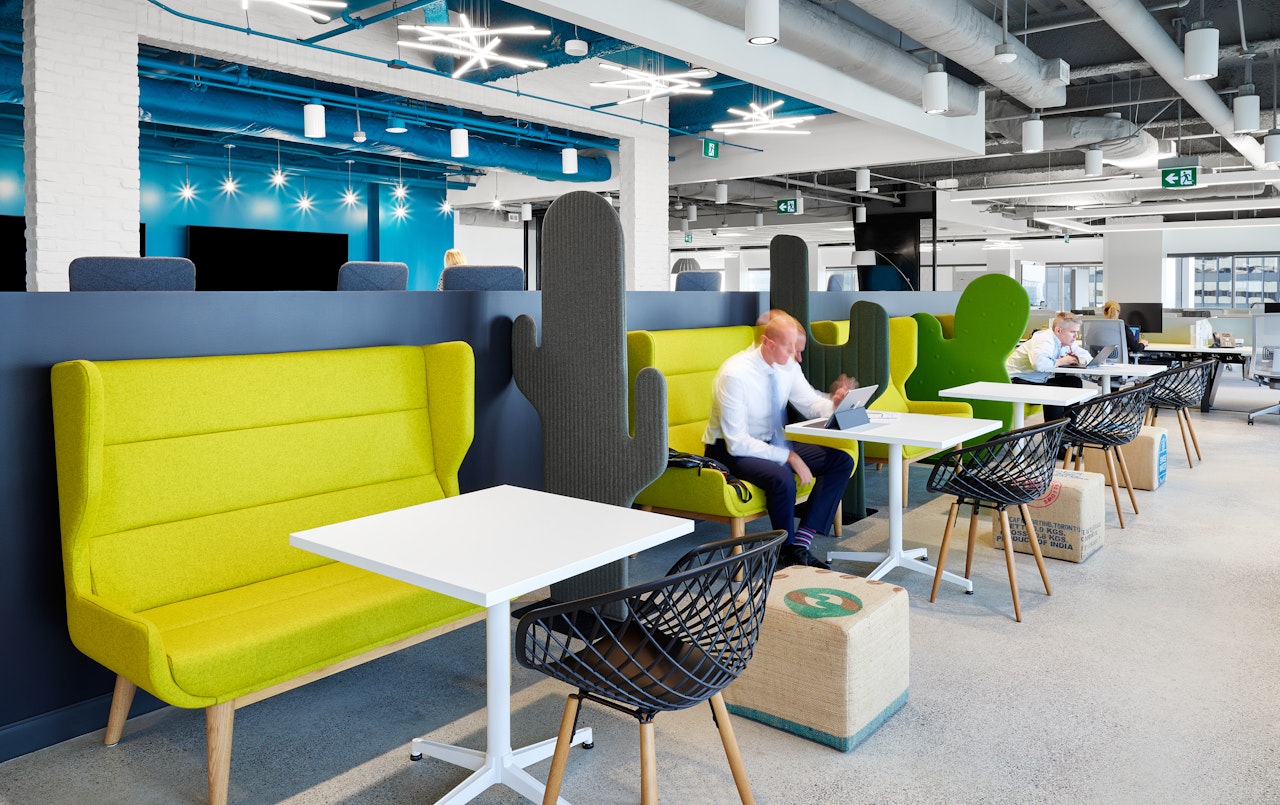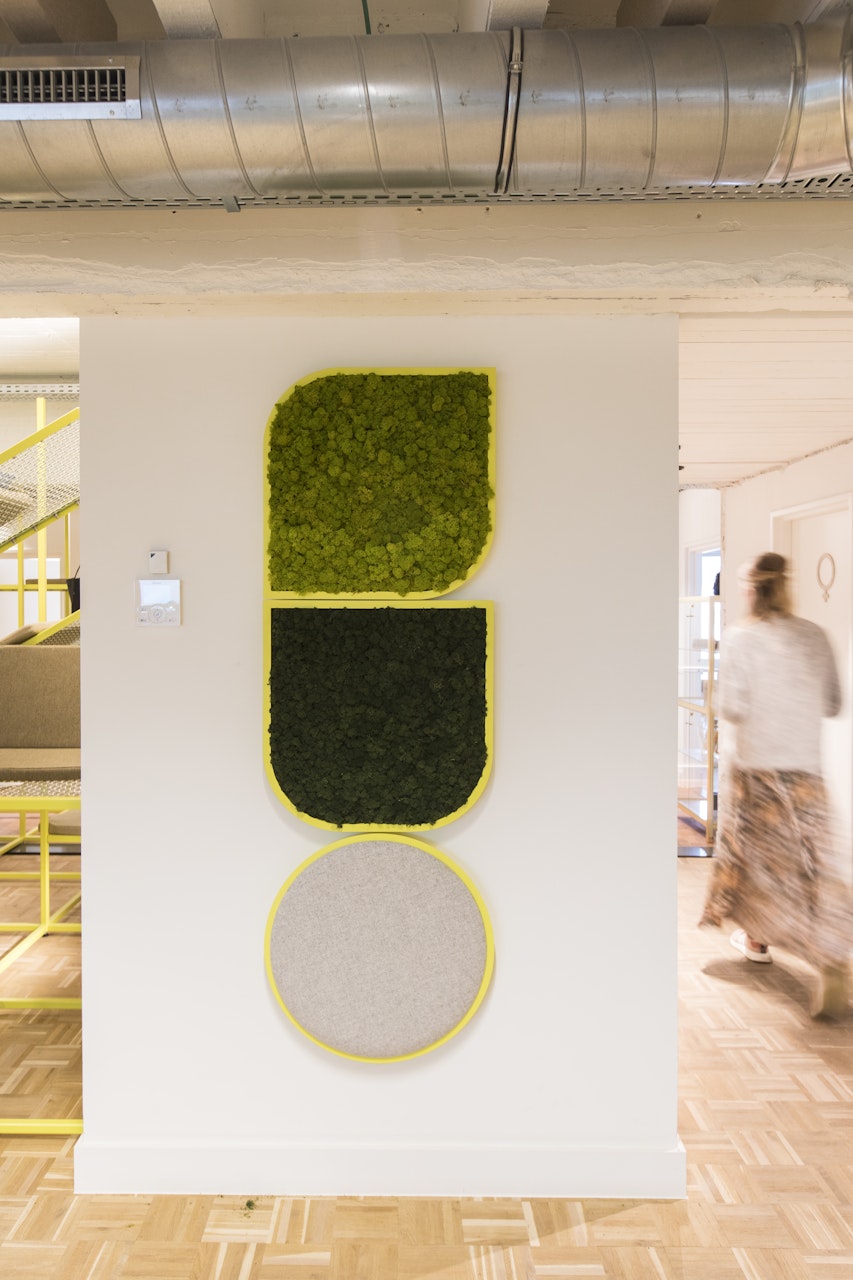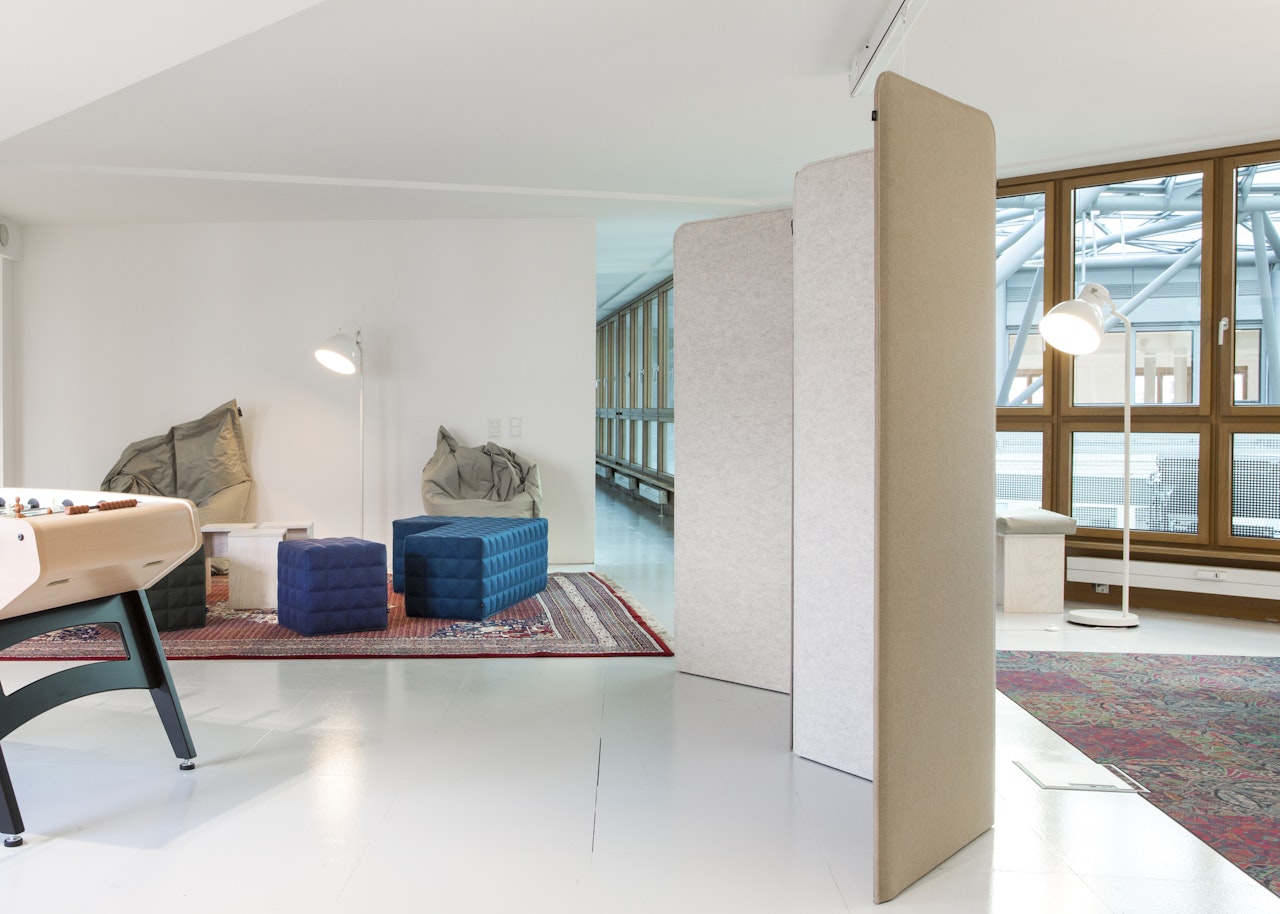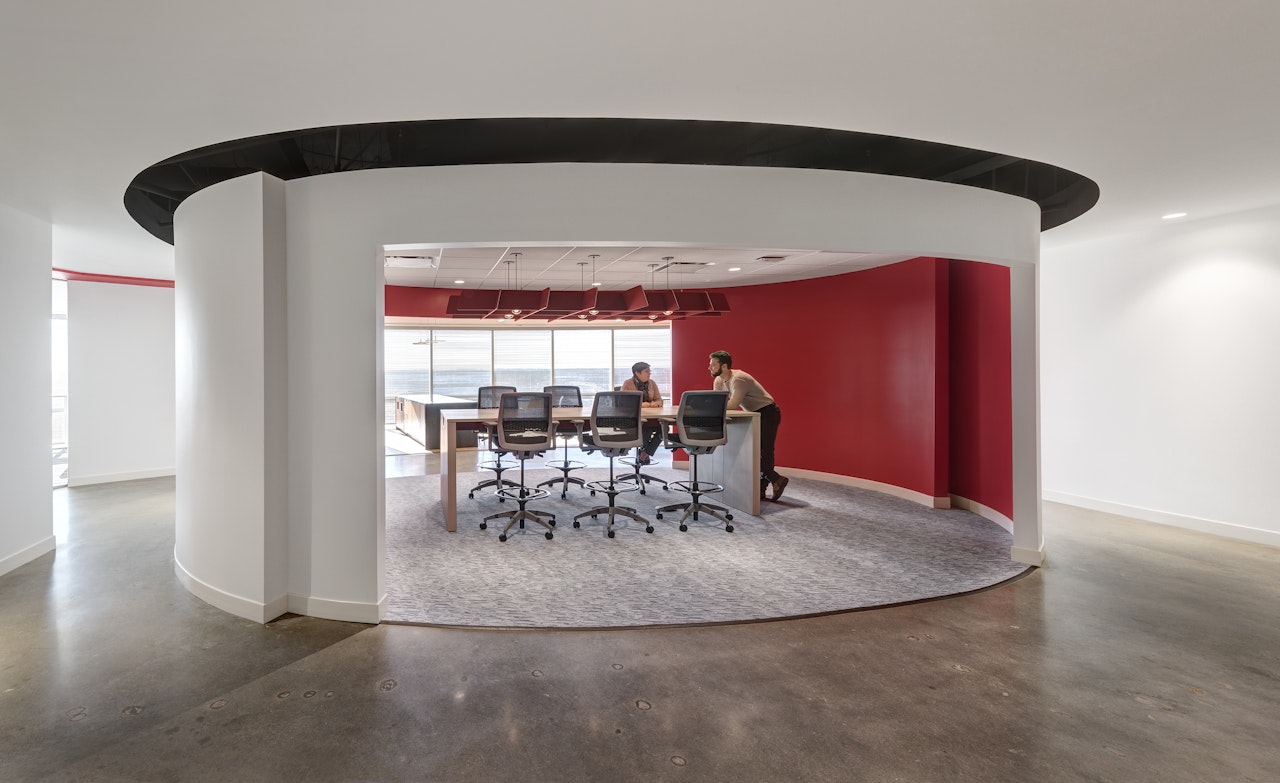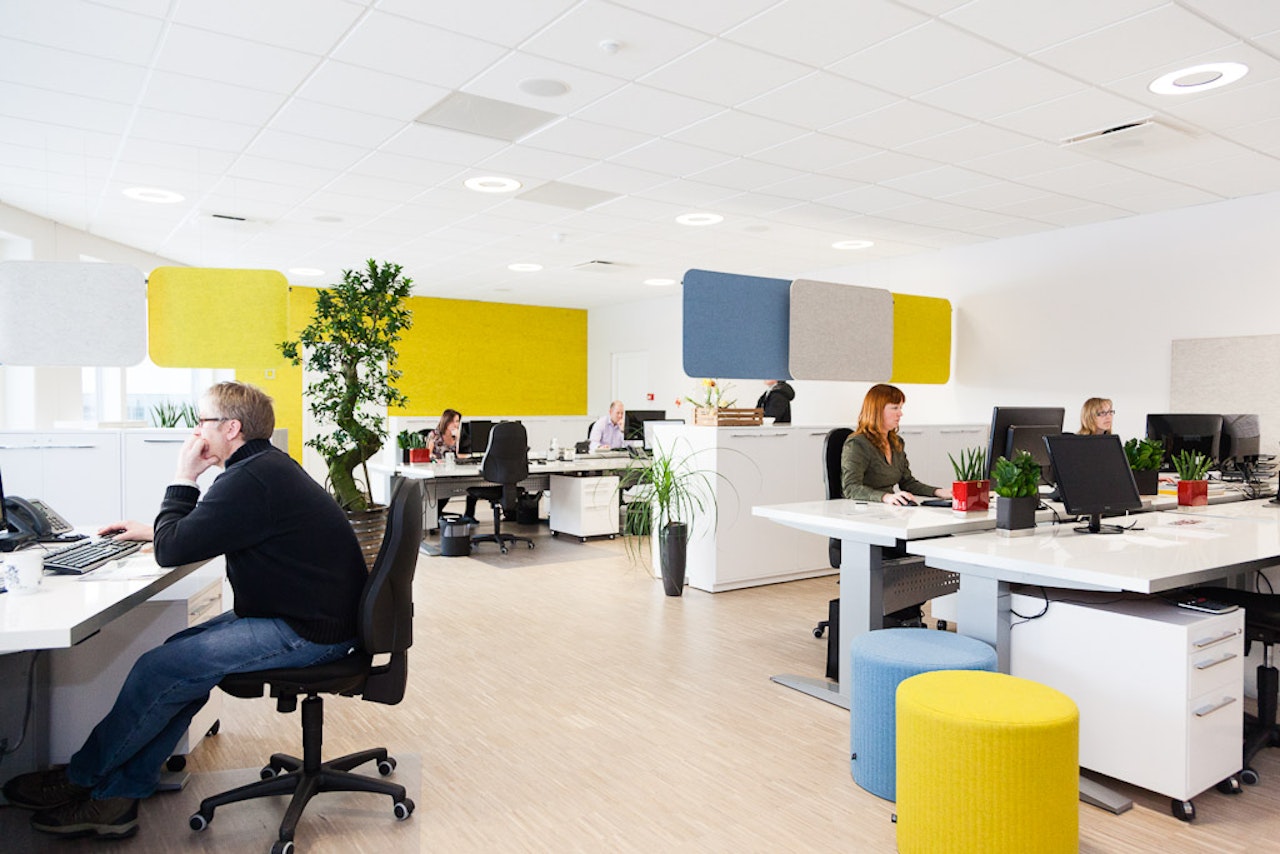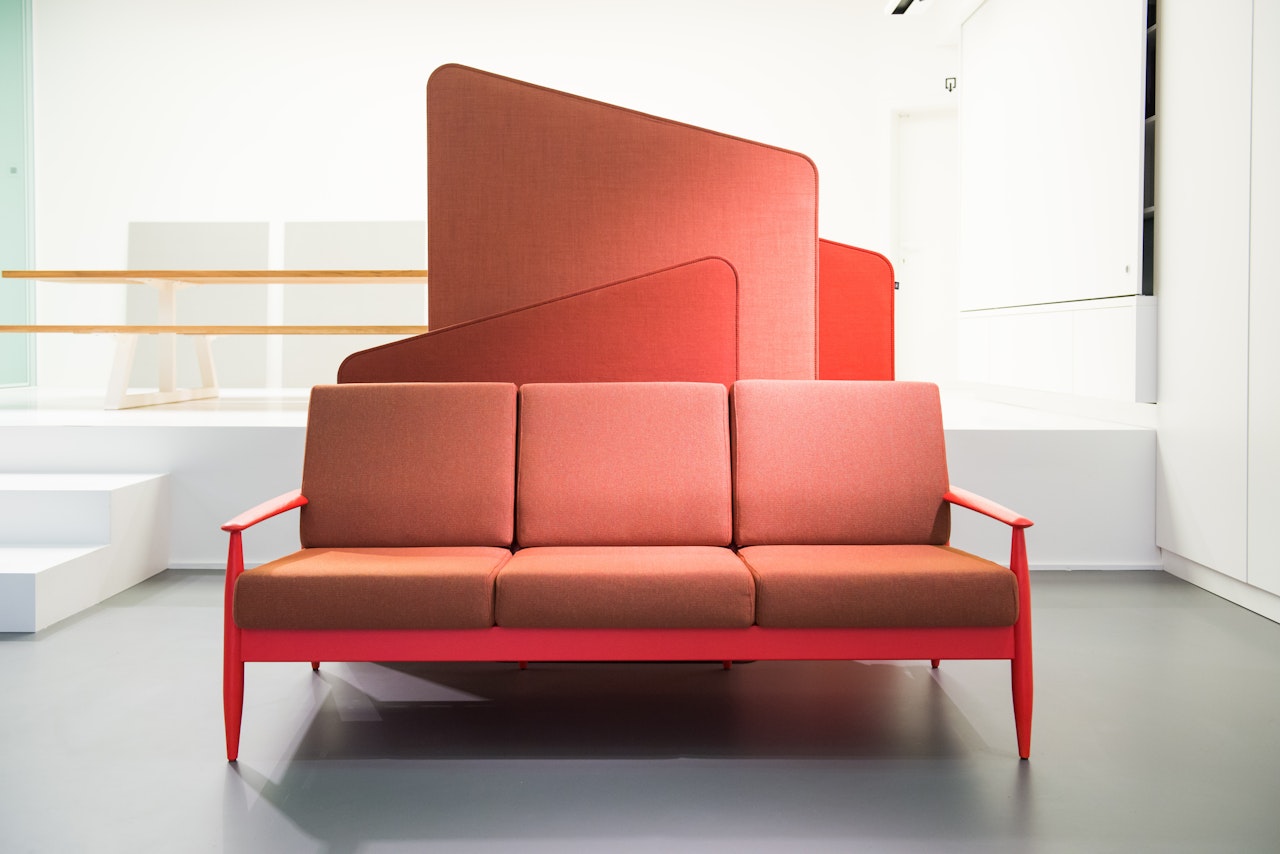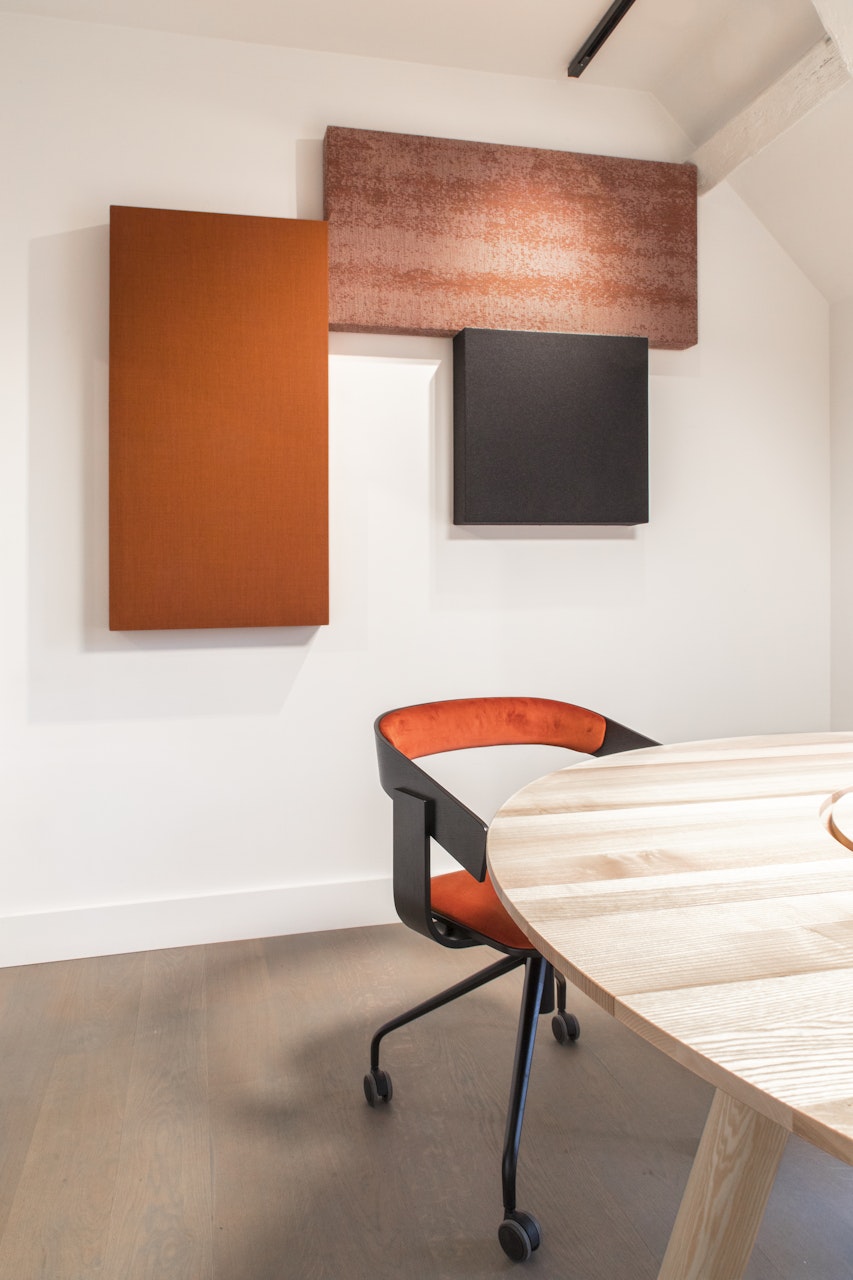
Acoustic panels, acoustic baffles, sound panels, and acoustic boards. The list of names continues. Call it whatever you prefer, just like many manufacturers do. For sake of clarity, we stick to acoustic panels in this guide. Despite the descriptive name, you will find various interpretations, both wide and narrow along with different use cases.
Therefore, in this guide, we will dive into the basics of acoustic panels. More specifically, we will answer the following questions:
- What is an acoustic panel?
- When to use acoustic panels?
- Where to apply acoustic panels?
To get the most out of this guide, make sure to check one of our other guides, The Basics of Noise Reduction, where we zoom in on the essential terminology of acoustics.
What is an acoustic panel?
The category of acoustic solutions is growing, and within this segment, you will find a range of different solutions, including acoustic panels. These are not limited to acoustic baffles suspended from the ceiling. To treat acoustic problems in your office, studio, and meeting room, there are plenty of other solutions available—some of which we will present to you in this guide.
But, first things first. Let’s define what an acoustic panel is.
An acoustic panel is a sound-absorbing panel used to mitigate background noise and reduce the reverberation and echo in a space. When we talk about an acoustic panel, we refer to it in its broadest sense including vertical and horizontal panels.
An acoustic panel is a sound-absorbing panel used to mitigate noise and reduce the reverberation and echo in a space.
For both types, we can talk about different principles of good acoustics: absorption, diffusion, and attenuation. These are all linked to the acoustic performance of the panels.
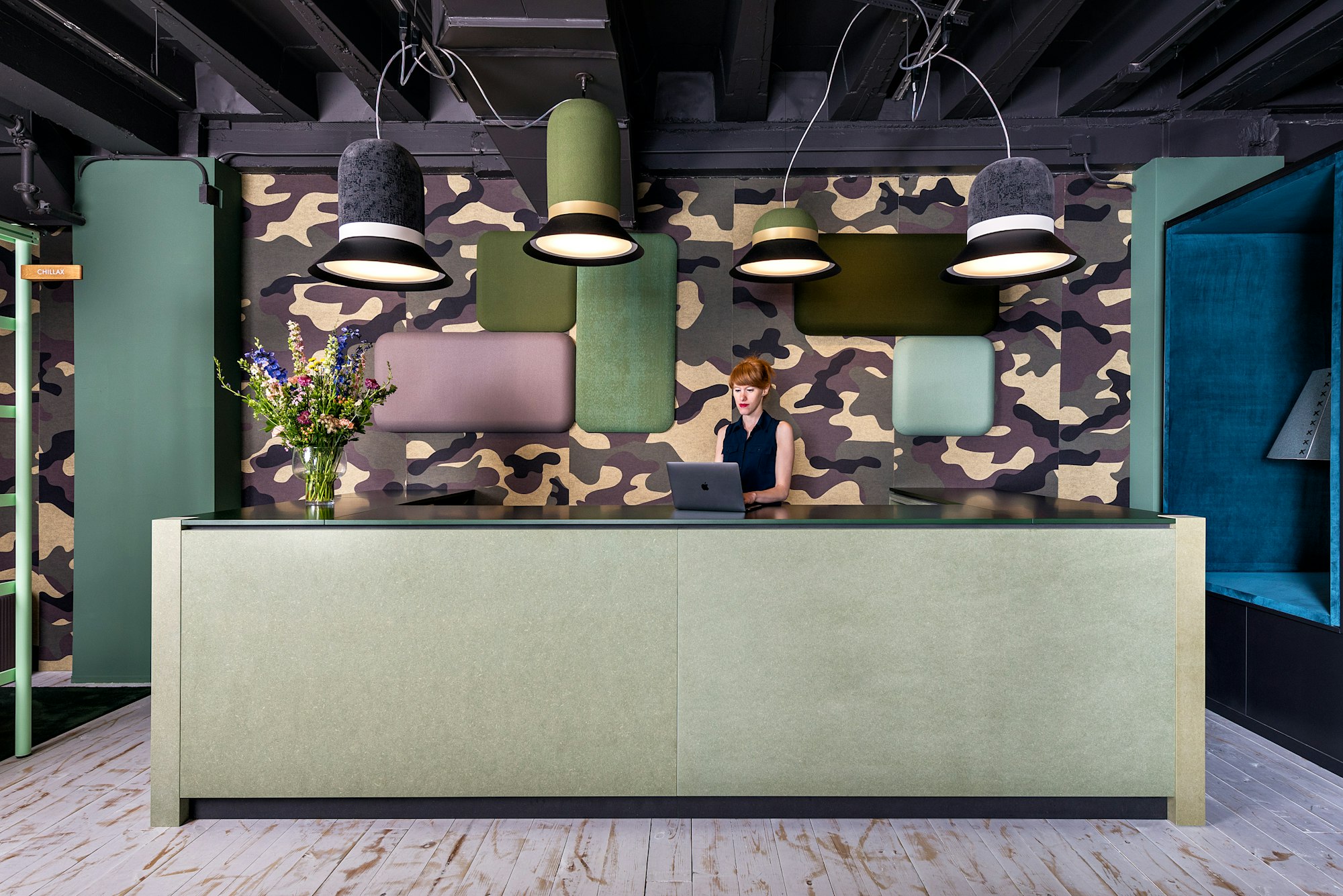
When to use acoustic panels?
With a better understanding of what acoustic panels are, we can now move on to the next question: when to use acoustic panels?
As mentioned earlier, vertical and horizontal panels can be characterized by different features related to their acoustic performance. However, we can specify it even further.
— Mitigate sound transfers with vertical acoustic panels
In general, vertical panels help mitigate sound transfers in a space, preventing that sound travels from one end of the room to the other. Vertical panels may also aid in lowering background noise to an acceptable level. For instance, in many modern open-space offices, the noise levels range from 60-80 decibels, while the recommended level is 45-55 decibels.
Therefore, if the goal is to reduce background noise and the reverb time, possible vertical solutions include:
- Freestanding panels, such as BuzziScreen, BuzziFrio, and BuzziBlinds.
- Ceiling-suspended panels, such as BuzziLoose and BuzziGrid.
- Wall-mounted panels, such as BuzziMood or some of the latest launches BuzziDish, BuzziTab Soft and BuzziKey Soft.
Alternatively, opt for sound-absorbing wallpaper, such as BuzziSkin Printed, to bring dull walls back to life!
In order to remove background noise completely, ideally, you have to build floor-to-ceiling partitions or remove yourself from the noise source. Yet, vertical panels can go a long way to help reduce sound transfers.
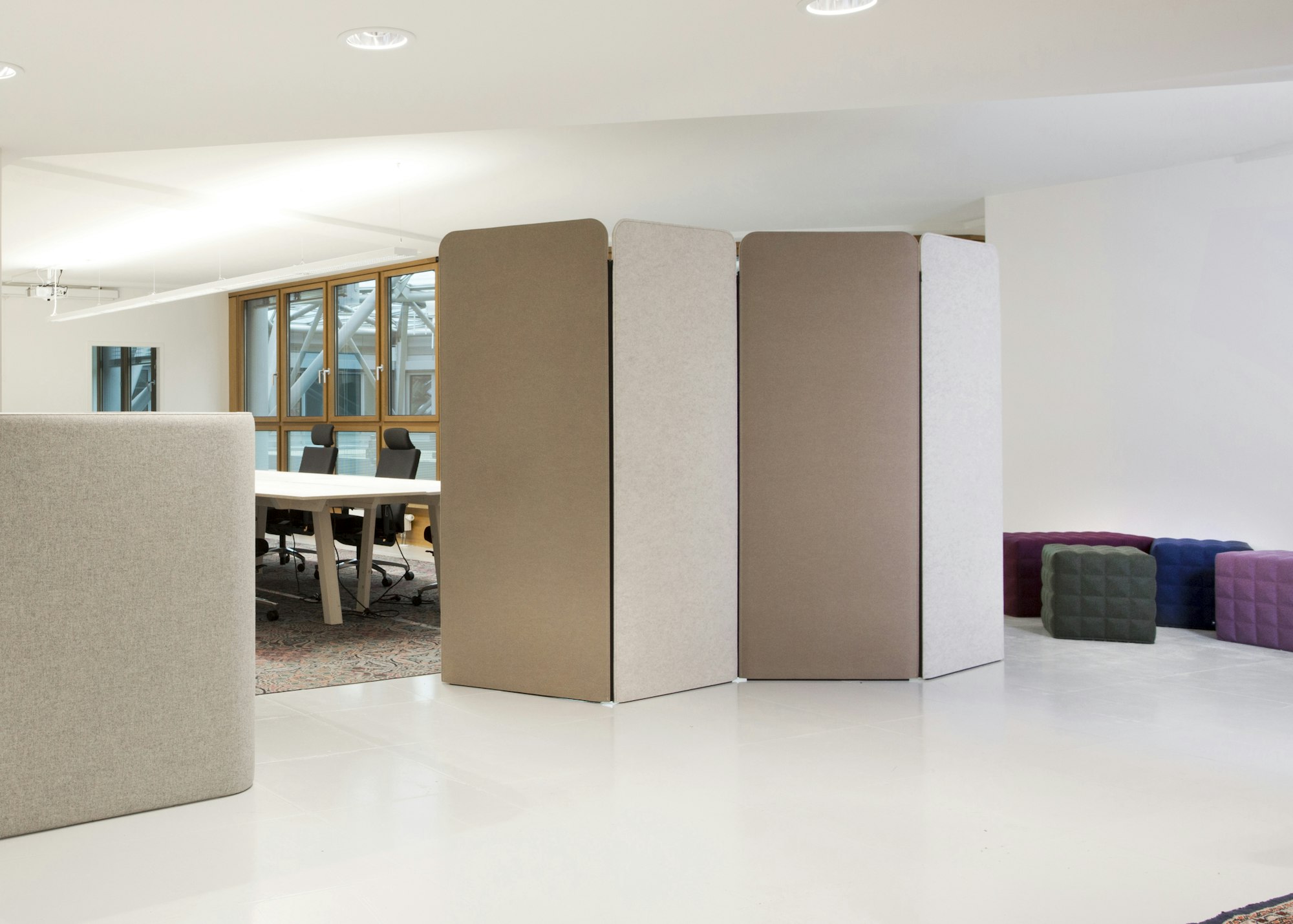
— Improve direct absorption with horizontal acoustic panels
Horizontal panels, on the other hand, are primarily used for direct absorption. To stop sound waves from spreading, absorptive panels must be used to convert the sound energy into heat through friction. Made from sound-absorbing materials or soft acoustic foam, all our horizontal panels are performing well in terms of absorption.
Examples of possible solutions for direct absorption include a range of ceiling-suspended panels such as BuzziLand, BuzziDonut, BuzziBlox, and BuzziPleat.
Check out another guide providing more in-depth recommendations for which acoustic solution might be best to solve your acoustic problem. Read it here.
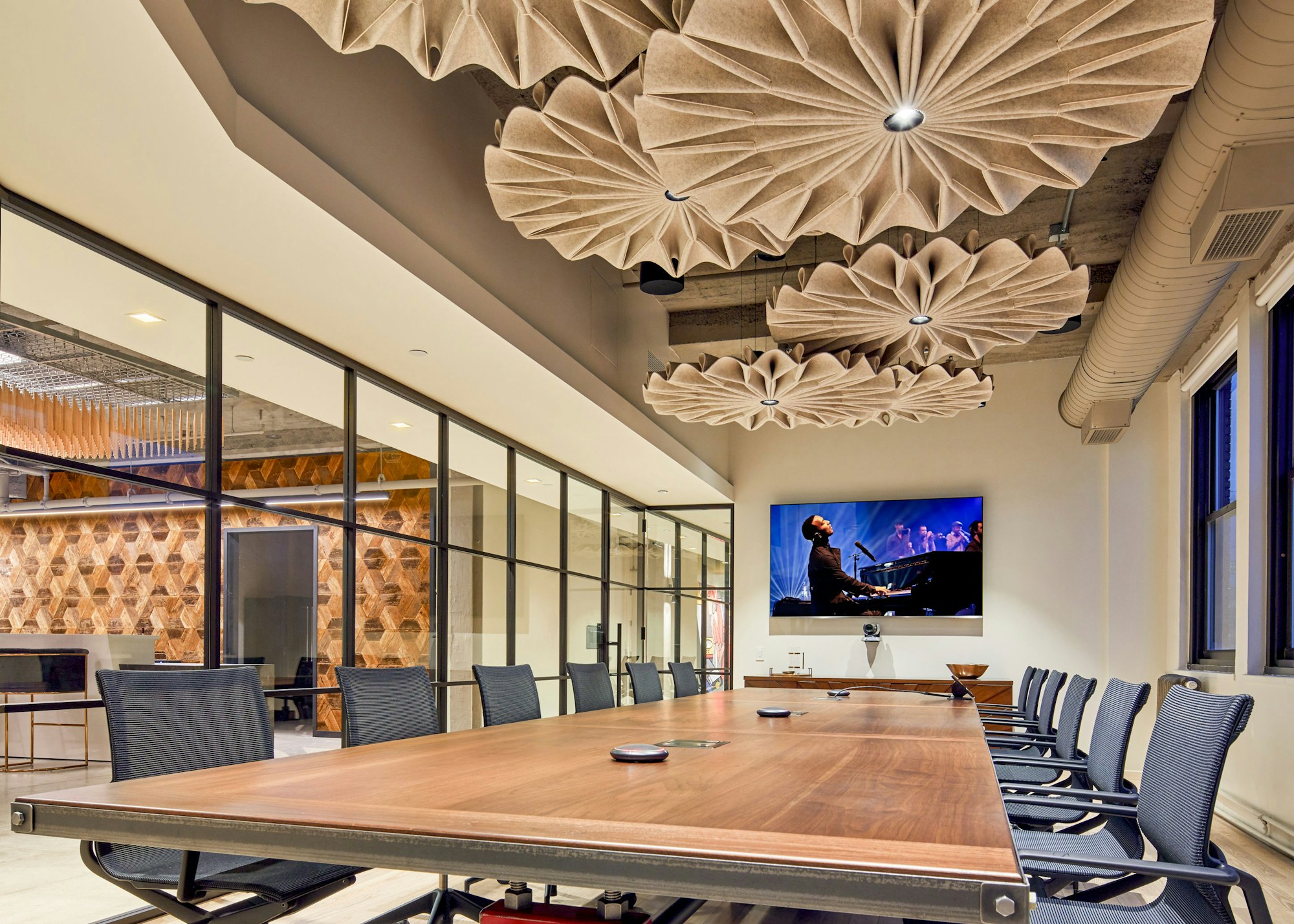
Where to apply acoustic panels?
Whether you want to limit sound transfers, reduce background noise and reverb time, it’s crucial to determine the location of the acoustic panels to achieve the best performance. Finding the ideal positioning depends on several factors, including
- room type,
- the activity of the space,
- existing furniture, and
- materials in the space (e.g. glass, plastic, wood).
Here, we will primarily share general advice on where to apply acoustic panels. For specific recommendations and simulations, we suggest you get in touch with our acoustic help desk. Generally speaking, we can define a few guidelines for placing acoustic panels. The first step involves asking yourself: What is the size of the space? Are you dealing with a small or big space?
In smaller rooms, for instance, meeting rooms, designated focus areas, and private offices, sound waves will typically first bounce against the walls. Why? These are usually the hard surfaces closest to the sound source. As a consequence, you should be looking into using wall-mounted acoustic panels. These will help absorb the sound, reducing the number of waves that are sent back into the room. Examples include BuzziPod, BuzziSkin, BuzziMood, and BuzziBlox.
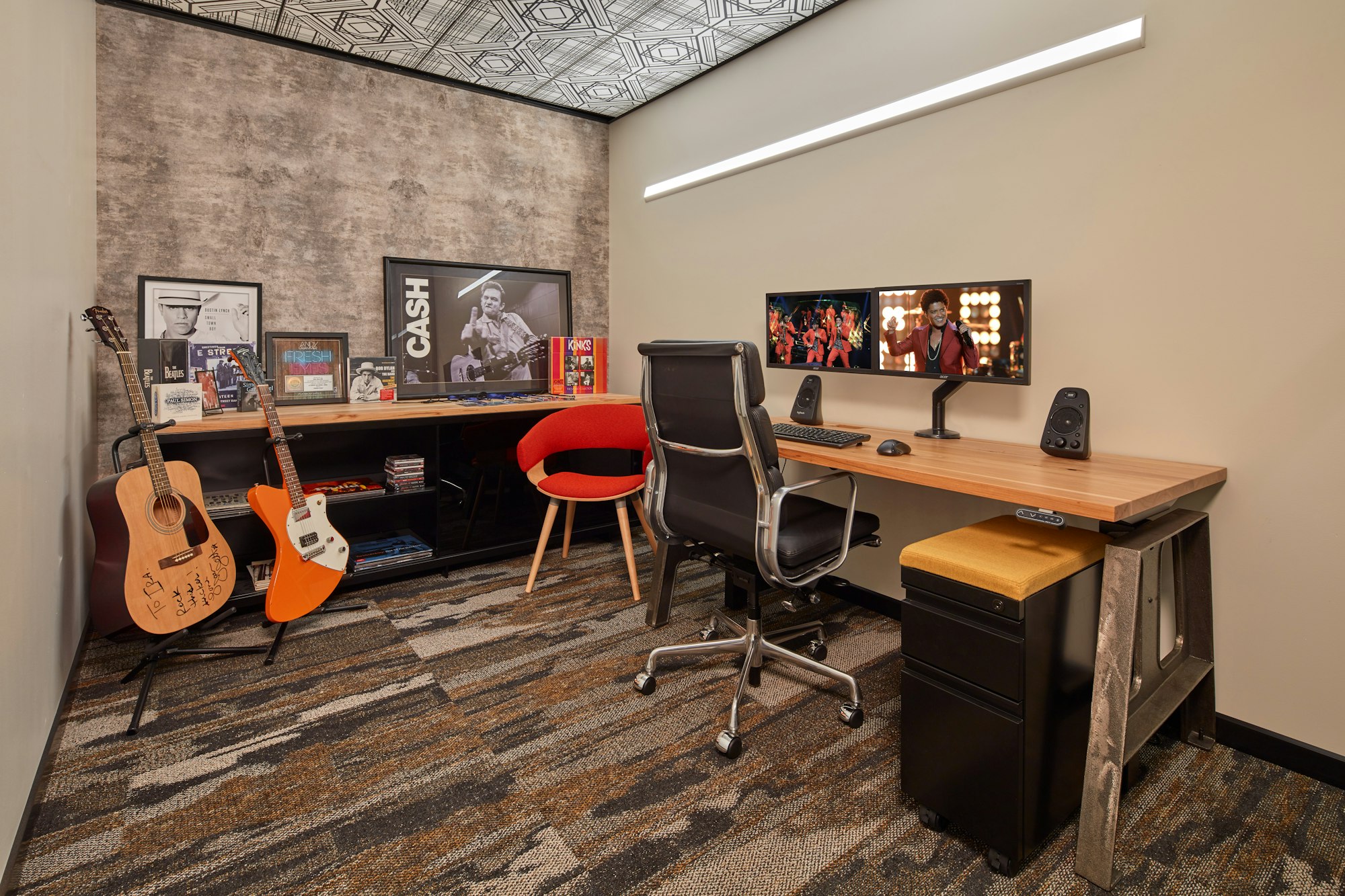
In bigger rooms and large spaces, sound waves behave differently. Sound energy propagates in any space, but in larger spaces, less sound energy is bouncing back into the room as the original sound sometimes drops dead before even reaching a hard element.
Yet, often sound waves do hit a hard surface before dropping dead—typically the ceiling rather than the walls. In these cases, horizontal ceiling-suspended acoustic panels can help improve the sound of the space considerably. When suspended from the ceiling, horizontal panels absorb undesired sound waves. For improved acoustic performance, install the panels in different suspension heights. The air pockets between the panels will capture sound waves, preventing them from traveling even further in spaces with high ceilings.
Examples of possible ceiling-suspended panels include BuzziZepp, BuzziDonut, BuzziGrid, and BuzziPleat. Some of these acoustic panels also come with an LED option for improved functionality. This way you can turn your acoustic panels into acoustic lighting and combine two features in one.
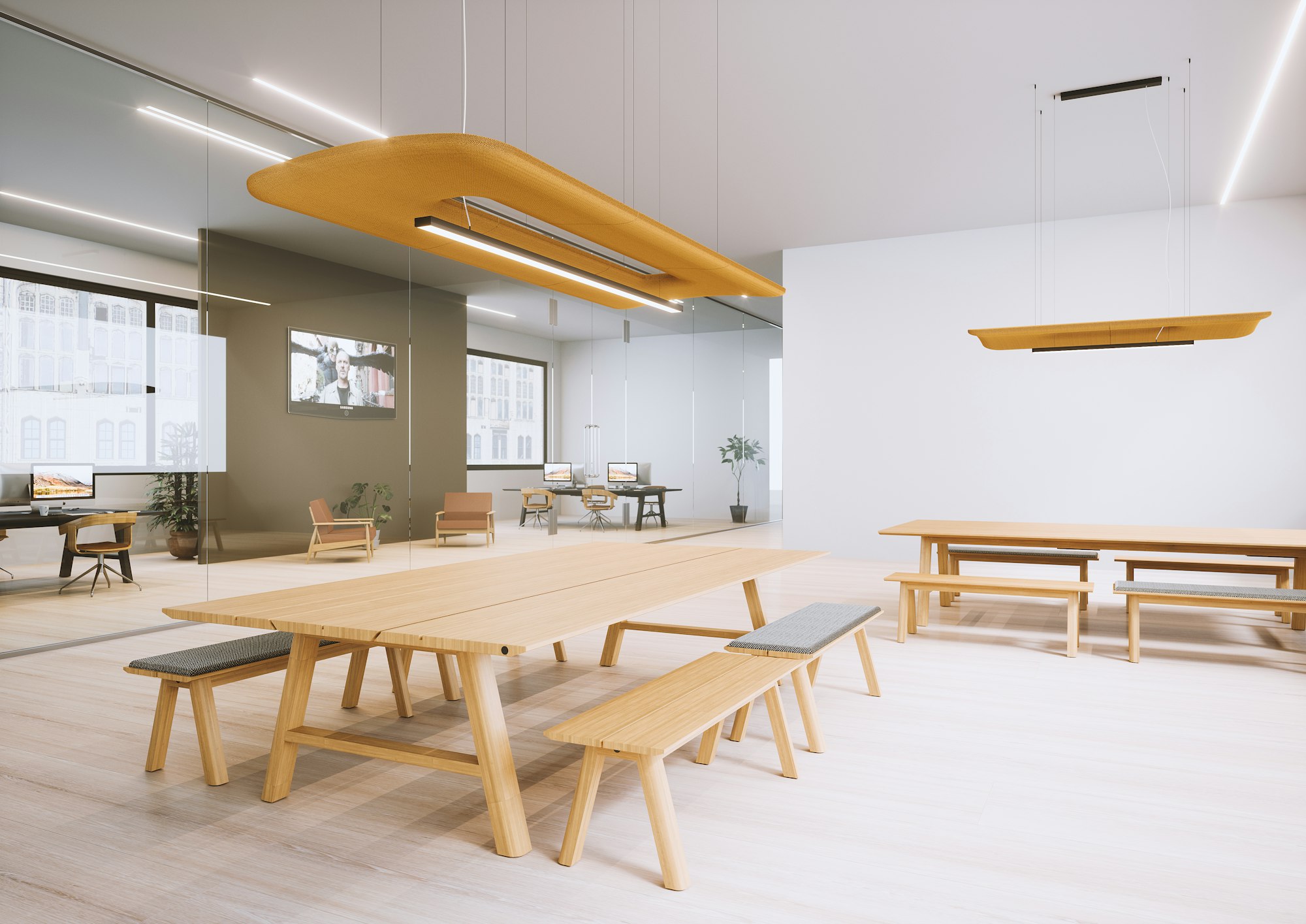
Following these examples, we hope to have inspired you to consider acoustic panels in your next project. Remember, acoustic panels can be playful and multifunctional. Embrace them and let them become part of your interior rather than hiding them. Browse through the gallery below for more inspiration!
Do you need acoustic advice?
Related articles
Idea Starters
3 Acoustic Solutions for an Added Layer of Privacy
Designing open spaces that feel both connected and functional is a delicate balancing act. That’s where acoustic solutions step in, not just to absorb sound, but to define zones, guide flow, and elevate well-being.
Idea Starters
New Sustainable Products: BuzziChicle, BuzziChicle Light & BuzziChicle Planter
Meet the sweet new solutions that will add a flavorful accent to any space.
Stories
BuzziBrella Wins 2025 HiP Award
The Sebastian Herkner-designed island of calm has been selected as the winner in the Hospitality: Seating category, while BuzziReForm took home an Honoree mention for Environmental Impact.
Stories
Chew on This: A Fresh Take on Design With Common Object Studio
What do gum, joy, and sustainable design have in common? Quite a lot!
Idea Starters
A Softer Impact: BuzziBlox Goes Denim
BuzziBlox just got a sustainable update.
Stories
Mushroom Power: The Magic Behind BuzziSpace’s Mycelium Acoustic Panels
Designed with a commitment to sustainability, BuzziSpace's mycelium-based acoustic panels harness the intricate root structure of fungi, which is 100% grown and crafted from local organic waste materials in Europe, serving as a fully biodegradable alternative to other acoustic panels in the company's award-winning catalog.
Stories
Nature’s Inspiration: Inside the World of BuzziShroom
With an eye for detail and a passion for pushing boundaries, Cory Grosser unveils the inspiration, challenges, and triumphs that flourished in the creation of BuzziShroom.
Idea Starters
New Product: BuzziReDesk
Introducing BuzziReDesk – Redefining Your Workspace With Sustainable Style
Idea Starters
New Products: BuzziJet Square & BuzziTube Square
Time to elevate your ceilings!
Projects
FIS’s Citigroup Tower office merges acoustics with visual delight
Proper acoustics play an imperative role in any environment, especially when it comes to creating a comfortable and productive workspace to thrive in.
Projects
GETEC: A well-balanced approach promoting collaboration
Discover the newly refurbished offices of GETEC in Hannover, designed to create a new work environment that encourages teamwork and supports the creative thinking process.
Idea Starters
Sound-absorbing lighting put into practice
Explore 7 inspirational settings for fresh ideas on how to implement acoustic lighting.
Projects
Case Study: Reducing Noise in an Open Office - Puppet Labs
Discover how sound absorbing solutions can transform a workspace from poor acoustics and high noise levels to a comfortable and productive environment.
Idea Starters
9 Sound-absorbing lighting solutions that never go out of style
Some acoustic lightings just never go out of style. We share some of our existing solutions in new settings to inspire you.
Stories
Introducing a new range of desk and room dividers: BuzziTripl
Our ways of working and interacting have fundamentally changed: companies are taking measures to create physical distance in the office and working from home is the new normal. At BuzziSpace we embrace these changes by launching BuzziTripl family, a collection of desk and screen solutions for both office and home, that will keep everyone happy, healthy and safe.
